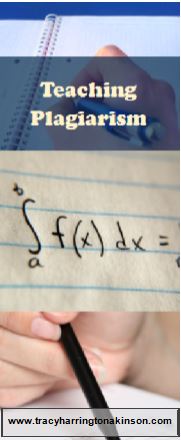In 2007, Harris, et. al. stated, “Plagiarism has become an issue of growing concern across universities.” This was stated in 2007! How much more of a concern is it today? Is it really a concern? 
YES! Susan Perry (2015) quoted the following statistics for plagiarism among scientists:
- 2 percent of polled scientist admitted to falsifying or fabricating data at least once
- almost 34 percent acknowledged they had engaged in other questionable research practices
The title of Susan Perry’s article sums up the extend of the problem: Plagiarism, fraud and predatory publishing are polluting science. Could there be a better reason to avoid plagiarism?
What is plagiarism?
Definition: In an instructional setting, plagiarism occurs when a writer deliberately uses someone else’s language, ideas, or other original (not common-knowledge) material without acknowledging its source.
This definition applies to texts published in print or on-line, to manuscripts, and to the work of other student writers.
Most current discussions of plagiarism fail to distinguish between:
- submitting someone else’s text as one’s own or attempting to blur the line between one’s own ideas or words and those borrowed from another source, and
- carelessly or inadequately citing ideas and words borrowed from another source.
(Quoted from the Council of Writing Program Administrators)
It really is quite simple to teach. If you didn’t think it, it isn’t yours. My favorite way to explain plagiarism to students of all ages is if it sounds familiar or if you ‘borrowed’ the words from someone else, its plagiarism.
How to teach plagiarism?
Sometimes, this can be difficult. I have a firm belief that the younger the child/student, the more lenient one should be. The doesn’t mean age, necessarily, but young to the learning environment. In an online teaching environment, I’ve often had students copy and paste answers from another website. They are not intentionally plagiarizing or cheating. They’ve been taught to copy and paste, learning from primary sources, etc. They may simply be attempting to give the most accurate information in an expedient manner. The best result to finding plagiarism is to teach the student the meaning.
- Doubt first. Ask the student if they understand plagiarism. Have them define the word to them.
- Show your students examples of plagiarism.
- Teach them how to paraphrase information and how to cite sources.
- Show them the consequences and the results of plagiarism.
- Teach how to use quotes and sources.
- Help your students understand the differences between cheating and ‘helping’ either by parents, classmates or friends.
- If you’re a teacher, be sure to change your assignments. Don’t use the same curriculum and the same assignments year after year.
In most cases, students simply did not understand plagiarism or what was occurring. I have rarely found malicious intents to cheat.
Sources:
Council of Writing Program Administrators. (2015). Defining and avoiding plagiarism. Retrieved from http://wpacouncil.org/positions/WPAplagiarism.pdf
Harris, K-L., Krause, K., Gleeson, D., Peat, M., Taylor, C. & Garnett, R. (2007). Enhancing Assessment in the Biological Sciences: Ideas and resources for university educators. Available at: www.bioassess.edu.au
Perry, S. (2015). Plagiarism, fraud and predatory publishing are polluting science, says bioethicist Arthur Caplan. Retrieved from https://www.minnpost.com/second-opinion/2015/04/plagiarism-fraud-and-predatory-publishing-are-polluting-science-says-bioethic
By Tracy Harrington-Atkinson
Tracy Harrington-Atkinson, mother of six, lives in the Midwest with her husband. She is a teacher, having taught elementary school to higher education, holding degrees in elementary education, a master’s in higher education and continued on to a PhD in curriculum design. She has published several titles, including Calais: The Annals of the Hidden, Lemosa: The Annals of the Hidden, Book Two, Rachel’s 8 and Securing Your Tent. She is currently working on a non-fiction text exploring the attributes of self-directed learners: The Five Characteristics of Self-directed Learners.

Comments are closed